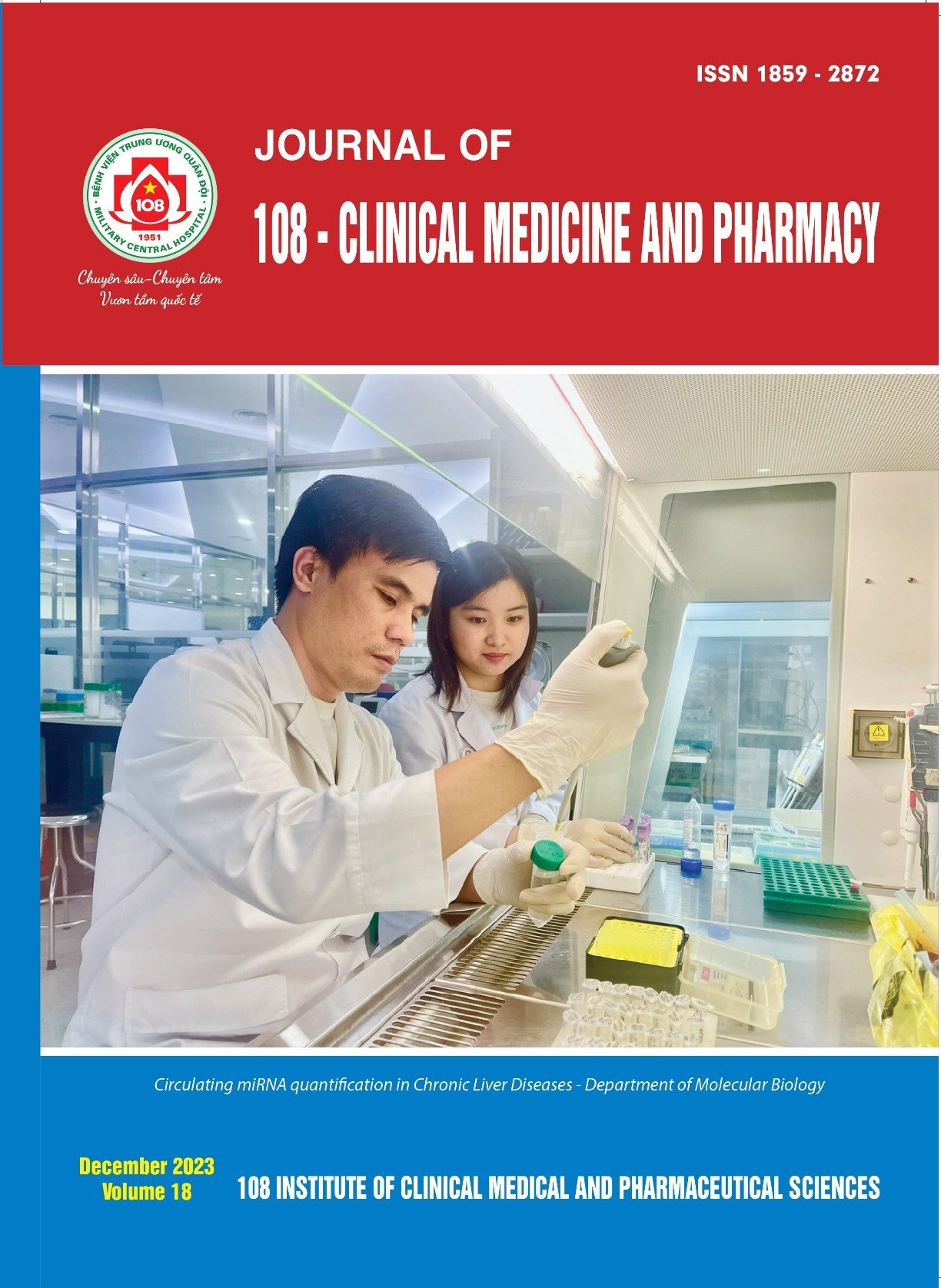The value of apparent diffusion coefficient in predicting treatment response of rectal cancer after neoadjuvant radiation therapy
Main Article Content
Keywords
Tóm tắt
Objective: To evaluate the value of the apparent diffusion coefficient (ADC) in predicting treatment response in rectal cancer patients after neoadjuvant chemoradiation therapy (nRCT). Subject and method: A study was conducted on 29 rectal cancer patients who underwent nRCT. Patients underwent magnetic resonance imaging (MRI), and tumor volume and ADC values (b-values: 0-1000s/mm²) were measured before and after nRCT. ADC values were measured in two ways: 1. For the entire tumor (ADC1) and 2. On the slice with the largest tumor area (ADC2). Changes in tumor volume (ΔV) and ADC values (ΔADC) before and after treatment were compared with the surgical pathology results, categorized into complete response (pCR)/incomplete response and downstaging T/not downstaging T groups. Result: ΔADC values were higher in the downstaging T group compared to the non-downstaging T group, with ΔADC1 values of 45.4% and 19.1%, respectively (p = 0.005), and ΔADC2 values of 51.7% and 20.2%, respectively (p = 0.01). At the ΔADC1 threshold of 42.2%, sensitivity was 55.6%, and specificity was 100%, while for ΔADC2 at 18.1%, sensitivity and specificity were 88.9% and 72.7%, respectively. There was no statistically significant difference in ΔADC values between the complete response and incomplete response groups (p>0.05). Changes in tumor volume did not provide prognostic value for treatment response to NRCT. Conclusion: The ΔADC value is a potential prognostic factor in predicting treatment response in rectal cancer patients after nRCT, with more accurate diagnostic information compared to tumor volume.
Article Details
Các tài liệu tham khảo
2. Lambrecht M, Vandecaveye V, De Keyzer F et al (2012) Value of diffusion-weighted magnetic resonance imaging for prediction and early assessment of response to neoadjuvant radiochemotherapy in rectal cancer: Preliminary results. Int J Radiat Oncol Biol Phys 82(2): 863-870.
3. Amodeo S, Rosman AS, Desiato V et al (2018) MRI-based apparent diffusion coefficient for predicting pathologic response of rectal cancer after neoadjuvant therapy: Systematic review and meta-analysis. AJR Am J Roentgenol 211(5): 205-216.
4. Iannicelli E, Di Pietropaolo M, Pilozzi E et al (2016) Value of diffusion-weighted MRI and apparent diffusion coefficient measurements for predicting the response of locally advanced rectal cancer to neoadjuvant chemoradiotherapy. Abdom Radiol (NY) 41(10): 1906-1917.
5. Palmisano A, Di Chiara A, Esposito A et al (2020) MRI prediction of pathological response in locally advanced rectal cancer: when apparent diffusion coefficient radiomics meets conventional volumetry. Clin Radiol 75(10): 798.e1-798.e11.
6. Joye I, Deroose CM, Vandecaveye V et al (2014) The role of diffusion-weighted MRI and (18)F-FDG PET/CT
 ISSN: 1859 - 2872
ISSN: 1859 - 2872
